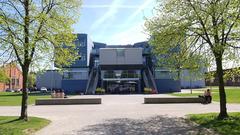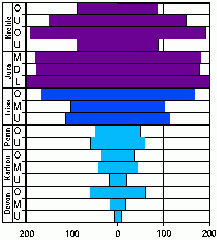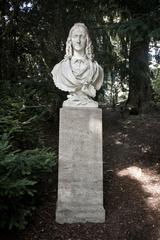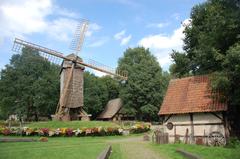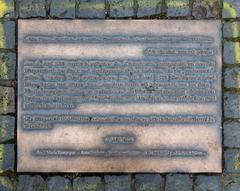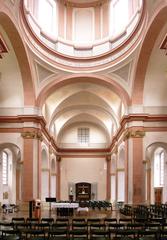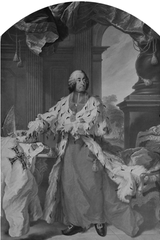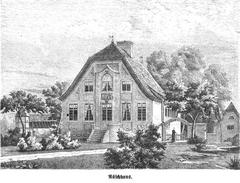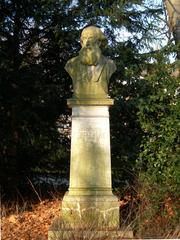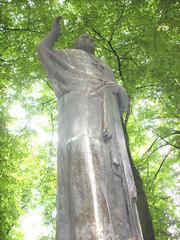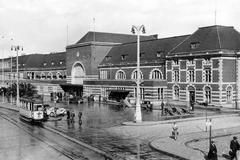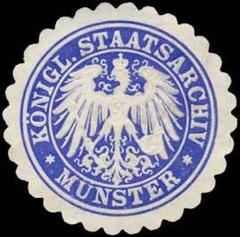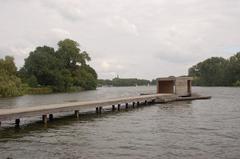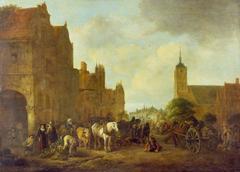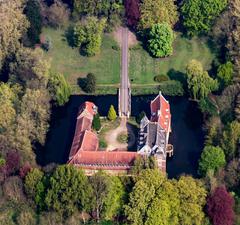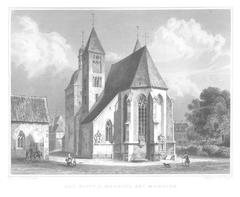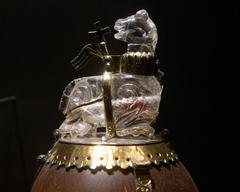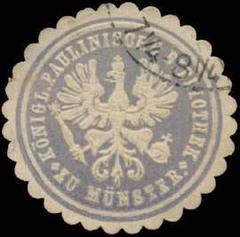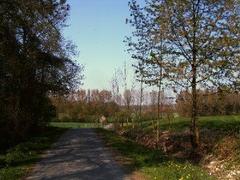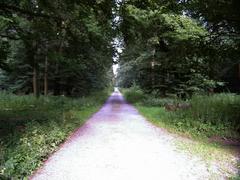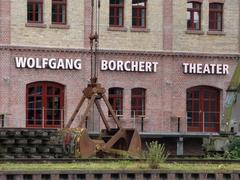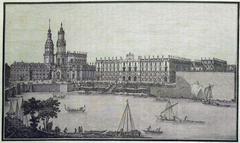
Comprehensive Guide to Visiting Münster, Münster Government Region, Germany
Date: 13/08/2024
Captivating Introduction
Welcome to Münster, the ‘Bicycle Capital of Germany,’ where history and modernity coexist in a harmonious blend. Imagine a place where the echoes of Charlemagne’s footsteps mingle with the vibrant hum of university life—a city that proudly wears its historical scars while embracing a youthful, dynamic spirit. Nestled in the heart of the Münster Government Region, this charming city invites you to pedal through its historic streets, explore its hidden gems, and immerse yourself in its rich cultural tapestry. From the bustling Prinzipalmarkt to the serene Aasee Lake, Münster offers a plethora of experiences that cater to history buffs, art lovers, and outdoor enthusiasts alike (Europe for Visitors).
Münster is more than just a pretty face; it’s a city with a story to tell. Founded in 793 A.D. by Charlemagne, this once humble monastery town evolved into a significant player in the Hanseatic League by the late 15th century. Its streets have witnessed the tumultuous Anabaptist Rebellion, the signing of the Peace of Westphalia, and the architectural renaissance of the Baroque period. Today, Münster stands as a testament to resilience and innovation, offering a unique blend of historical landmarks and contemporary attractions that promise to captivate and inspire (Wonderful Wanderings).
So, grab your bike, download Audiala, and get ready to dive into Münster’s past, present, and future. Whether you’re here to admire the Gothic spires of St. Paul’s Cathedral, savor a hearty meal at Altes Gasthaus Leve, or simply enjoy a leisurely boat ride on Aasee Lake, Münster has something for everyone.
Table of Contents
- Historical Overview
- The Vibrant Pulse of Modern Münster
- Insider Tips for Visitors
- Visitor Tips for Münster, Münster Government Region, Germany
Historical Overview of Münster
Early Beginnings and Medieval Era
Picture this: It’s 793 A.D., and Emperor Charlemagne decides to establish a monastery right where Münster stands today. Fast forward to 805 A.D., and Münster gets its city status. This little monastery set the stage for a city that’s seen it all (Europe for Visitors).
By 1494, Münster was rubbing shoulders with the bigwigs of the Hanseatic League, an elite club of merchant guilds and market towns. This boosted Münster’s trade game and made it an economic heavyweight (Germany Travel).
The Anabaptist Rebellion
Hold onto your helmets because the 16th century was wild. The Anabaptists, a radical religious group, took over Münster and turned it into their theocratic playground. This chaotic chapter ended when the city was forcefully returned to Catholic control during the Counter-Reformation (Europe for Visitors).
The Peace of Westphalia
Münster hit the history jackpot with the Peace of Westphalia in 1648. These treaties ended not one, but two major wars—the Thirty Years’ War and the Eighty Years’ War. The iconic treaties were signed in the Peace Hall of the Historical Town Hall, cementing Münster’s status as a symbol of peace and diplomacy (Wonderful Wanderings).
Architectural Heritage
Münster’s buildings are like a time machine. Start at the Prinzipalmarkt, where 48 gabled buildings stand proudly, despite their World War II reconstruction. For a blast from the past, visit the St. Paul’s Cathedral, home to an astronomical clock that’s been wowing folks since the Middle Ages (Germany Travel).
Baroque Influence
The Baroque period left its mark, too. Check out the Erbdrostenhof, a Baroque palace designed by Johann Conrad Schlaun, and the Clemenskirche, a charming little Baroque church.
The Vibrant Pulse of Modern Münster
Cultural and Educational Hub
Today, Münster is a lively university town with a youthful vibe, thanks to the University of Münster, founded in 1780 (Stadt Münster). Known as Germany’s bicycle capital, the city’s extensive bike paths contribute to its dynamic atmosphere (Wikipedia).
Architectural Heritage
Stroll through Münster’s historic streets, and you’ll find the Prinzipalmarkt, a testament to its Hanseatic past with medieval colonnades and bustling shops (My German City). Don’t miss the historic Town Hall, the birthplace of the Treaty of Westphalia (Lonely Planet).
Insider Tips for Visitors
Best Time to Visit
Late spring, early autumn, or summer are ideal for visiting Münster. The city is particularly enchanting during these seasons, with pleasant weather and vibrant outdoor activities. Summer holidays offer a quieter, more peaceful atmosphere as students leave (Travel on the Brain).
Getting Around
Münster’s old city center is a charming, walkable area, but cycling is the preferred mode of transportation. Rent a bike at the train station for around €8 per day (Travel on the Brain). Public transport is also available for those rainy or lazy days.
Must-See Attractions
St. Paul’s Cathedral
Marvel at St. Paul’s Cathedral, a 13th-century Gothic and Romanesque masterpiece featuring an astronomical clock with a daily noon Glockenspiel performance. Despite WWII damage, it has been magnificently restored (My German City).
Prinzipalmarkt
The Prinzipalmarkt, Münster’s historic heart, is lined with medieval colonnades, shops, cafes, and historical buildings—a perfect starting point for exploring the city’s rich history (Penguin and Pia).
St. Lambert’s Church
Visit St. Lambert’s Church, known for the iron cages hanging from its Gothic tower, a grim reminder of the Anabaptist Rebellion. The church itself is a stunning example of late-Gothic architecture (Lonely Planet).
Freilichtmuseum Mühlenhof
Experience history hands-on at the Freilichtmuseum Mühlenhof, an open-air museum showcasing buildings and scenarios from the 17th to 19th centuries (Wander Onwards).
Schloss Münster and Botanical Gardens
Explore the Baroque-style Schloss Münster, now part of the University of Münster, and unwind in the adjacent Botanical Gardens, a serene retreat with diverse plant species (Penguin and Pia).
Dive into Münster’s Cultural Experiences
City Museum of Münster
Dive into 1200 years of history at the City Museum of Münster, featuring exhibits on art, architecture, politics, and more (Wander Onwards).
Picasso Museum
Art lovers will enjoy the Picasso Museum, housed in an 18th-century neoclassical mansion and showcasing changing exhibits of Picasso’s works (Lonely Planet).
Municipal Theater
Catch a performance at the Municipal Theater, offering opera, dance, musical concerts, and literature readings. Experience Münster’s vibrant arts scene (My German City).
Savor the Flavors of Münster
Altes Gasthaus Leve
Dine at Altes Gasthaus Leve, Münster’s oldest restaurant, dating back to 1607. Enjoy local favorites and regional beers in a historic setting (My German City).
Harbor District
Explore the revitalized harbor district, a nightlife hotspot with a vibrant atmosphere, perfect for experiencing Münster’s contemporary culture (My German City).
Explore the Great Outdoors
Aasee
Relax at the Aasee, a picturesque lake offering boat rides, swimming, sailing classes, and other water activities. The surrounding park, named Europe’s most beautiful park in 2009, is perfect for cycling, inline skating, or enjoying lakeside restaurants and coffeehouses (My German City).
Call to Action
Ready to explore Münster’s rich history, vibrant culture, and hidden gems? Download Audiala, your ultimate tour guide app, and unlock the city’s secrets and stories. With beautifully crafted audio guides, Audiala offers expert insights and insider tips to enhance your journey. Don’t miss out—download Audiala today and start your adventure!
Visitor Tips for Münster, Münster Government Region, Germany
Did you know Münster is known as the ‘Bicycle Capital of Germany’? With more bikes than people, this charming city invites you to pedal through its historic streets and scenic parks.
Best Time to Visit
The optimal time to visit Münster is during the summer months of June, July, and August. During this period, the weather is warm and pleasant, with average temperatures ranging from 20 to 25 degrees Celsius. This season also hosts numerous outdoor events and festivals, such as the Münster City Festival and the Münster Christmas Market. Spring and fall are also favorable, offering mild weather and fewer tourists. However, winter can be cold and snowy, which may not be ideal for those who prefer warmer temperatures (Travopo).
Getting Around
Forget taxis—here in Münster, bikes are the real VIPs. Rent one and join the locals in a two-wheeled tour de force! Münster is renowned for its bicycle-friendly infrastructure, making it an ideal city for cycling enthusiasts. Visitors can rent a bike and explore the city’s extensive network of bike paths that lead to charming neighborhoods, parks, and scenic spots. The city center is also pedestrian-friendly, allowing for easy exploration on foot (Travopo).
Accommodation
Best Areas to Stay
-
Aasee: This neighborhood is located around the picturesque Aasee Lake, offering stunning views and a peaceful atmosphere. It is also home to Münster’s Botanical Garden and several parks, making it a great choice for nature lovers and outdoor enthusiasts (Travopo).
-
Hafen: Situated along the Dortmund-Ems Canal, Hafen is a vibrant waterfront area known for its modern architecture, trendy cafes, and art galleries. Staying in Hafen allows visitors to enjoy scenic canal views and explore the area’s cultural offerings, such as the LWL Museum of Art and Culture (Travopo).
-
Gievenbeck: Located on the outskirts of Münster, Gievenbeck is a residential area that offers a peaceful and family-friendly environment. It is known for its green spaces, including the beautiful Gievenbecker Park. Staying in Gievenbeck provides a quieter retreat while still being within easy reach of the city center (Travopo).
Dining and Cuisine
Münster is a culinary paradise with numerous restaurants and cafes serving a variety of cuisines. For food lovers, the Prinzipalmarkt is a must-visit destination. Here, visitors can enjoy traditional German cuisine as well as international delicacies. Local specialties such as Westphalian ham and pumpernickel bread are highly recommended (Explorial).
Shopping
The Prinzipalmarkt is not only a historical site but also a bustling shopping destination. The area features beautifully restored gabled houses dating back to the 16th century, along with numerous shops, boutiques, cafes, and restaurants. It’s a perfect place for both shopping and dining under its picturesque arcades (Explorial).
Events and Festivals
Münster’s calendar of events is packed with highlights, including concerts, city festivals, culinary events, cultural highlights, and unique sporting events. Some of the notable events include:
-
St. Lambert’s Fair (Lamberti-Markt): A Christmas market held in December, transforming Prinzipalmarkt into a winter wonderland with twinkling lights, festive decorations, and an array of stalls selling handicrafts and holiday treats (Explorial).
-
Weekly Market: Held on Wednesdays and Saturdays, the weekly market offers fresh vegetables and fruits, meat products, baked goods, seasonal flowers, and spices from around the world. It’s a great place to experience local culture and cuisine (Münsterland).
Sightseeing
Prinzipalmarkt
The Prinzipalmarkt is one of the most famous landmarks in Münster. Known for its unique blend of historical and modern architecture, this central market square has been an important hub for trade and commerce since the Middle Ages. The area features beautifully restored gabled houses that date back to the 16th century, along with numerous shops, boutiques, cafes, and restaurants (Explorial).
Münster Cathedral (St. Paulus Dom)
This impressive Gothic cathedral is a must-visit for history and architecture enthusiasts. Visitors can climb the tower for panoramic views of the city or explore the interior, which houses stunning stained glass windows and intricate woodwork (Travopo).
LWL Museum of Art and Culture
For those interested in art, the LWL Museum of Art and Culture is a must-see. This renowned museum showcases a wide range of artworks from different periods, including paintings, sculptures, and photography. The museum also hosts temporary exhibitions that highlight various themes and artists (Travopo).
Outdoor Activities
Aasee Lake
Nature lovers will enjoy a visit to the Aasee, a picturesque lake located just outside the city center. Here, visitors can rent a boat or bicycle and enjoy a leisurely ride around the lake. The surrounding parkland is perfect for picnics or relaxing walks (Travopo).
Safety Tips
Münster is generally a safe city for tourists. However, it is always advisable to take standard precautions such as keeping an eye on personal belongings, especially in crowded areas. It is also recommended to stay informed about local news and follow any travel advisories issued by local authorities (Travopo).
Contact Information
For more information about events, accommodations, and attractions in Münster, visitors can contact the local tourist information center:
- Phone: 0049 2571 94 93 92
- Email: [email protected]
- Website: Münsterland Tourism
Ready to unlock Münster’s best-kept secrets? Download Audiala, your ultimate tour guide app, and let the adventure begin. With expert insights and hidden gems, Audiala is your perfect companion for discovering this charming city. By following these tips, visitors can ensure a memorable and enjoyable experience in Münster, a city rich in history, culture, and natural beauty.
Call to Action
As you wrap up your journey through Münster, take a moment to reflect on the city’s fascinating juxtaposition of old and new. From the medieval colonnades of Prinzipalmarkt to the contemporary vibrancy of the Harbor District, Münster seamlessly blends its rich historical heritage with a dynamic, modern lifestyle. This unique combination makes it a compelling destination for travelers seeking both cultural enrichment and modern comforts (Germany Travel).
Münster’s story is one of resilience and transformation. The city has weathered religious upheavals, wars, and reconstruction, emerging each time with renewed vigor and a richer cultural tapestry. Whether it’s the iron cages hanging from St. Lambert’s Church, a grim reminder of the Anabaptist Rebellion, or the beautifully restored St. Paul’s Cathedral, Münster’s landmarks serve as poignant testaments to its enduring spirit (Travopo).
But Münster is not just a city frozen in time; it’s a living, breathing entity that continues to evolve. Its thriving arts scene, bustling markets, and serene green spaces offer endless opportunities for exploration and discovery. So, whether you’re here for a weekend getaway or an extended stay, Münster promises to leave anindelible mark on your heart and mind.
Ready to delve deeper into Münster’s rich history and vibrant culture? Download Audiala, your ultimate tour guide, and unlock the city’s hidden gems and expert insights. With Audiala by your side, you’ll navigate Münster like a local, uncovering the stories and secrets that make this city truly unique. Don’t miss out—download Audiala today and let your Münster adventure begin!
References
- Europe for Visitors. Historical Overview of Münster. Retrieved from Europe for Visitors.
- Germany Travel. Münster: Cities & Culture. Retrieved from Germany Travel.
- Wonderful Wanderings. Münster, Germany. Retrieved from Wonderful Wanderings.
- Travopo. Visitor Tips for Münster. Retrieved from Travopo.
- Stadt Münster. Young Old City. Retrieved from Stadt Münster.
- My German City. Münster Attractions. Retrieved from My German City.
- Lonely Planet. Münster Attractions. Retrieved from Lonely Planet.
- Travel on the Brain. Itinerary Münster Germany. Retrieved from Travel on the Brain.
- Penguin and Pia. Things to do in Münster, Germany. Retrieved from Penguin and Pia.
- Wander Onwards. Day Trip to Münster Germany. Retrieved from Wander Onwards.
- Explorial. Münster Prinzipalmarkt. Retrieved from Explorial.
- Münsterland. Events in Münster. Retrieved from Münsterland.
